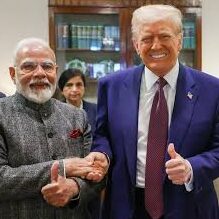
Modi May Meet Trump in the US Next Month: Report
Indian Prime Minister Narendra Modi may meet US President Donald Trump during a possible visit to the United States next month, according to a report by the Indian Express. The visit would coincide with the United Nations General Assembly (UNGA) session in New York and comes just days after Trump announced a 25% additional tariff…

